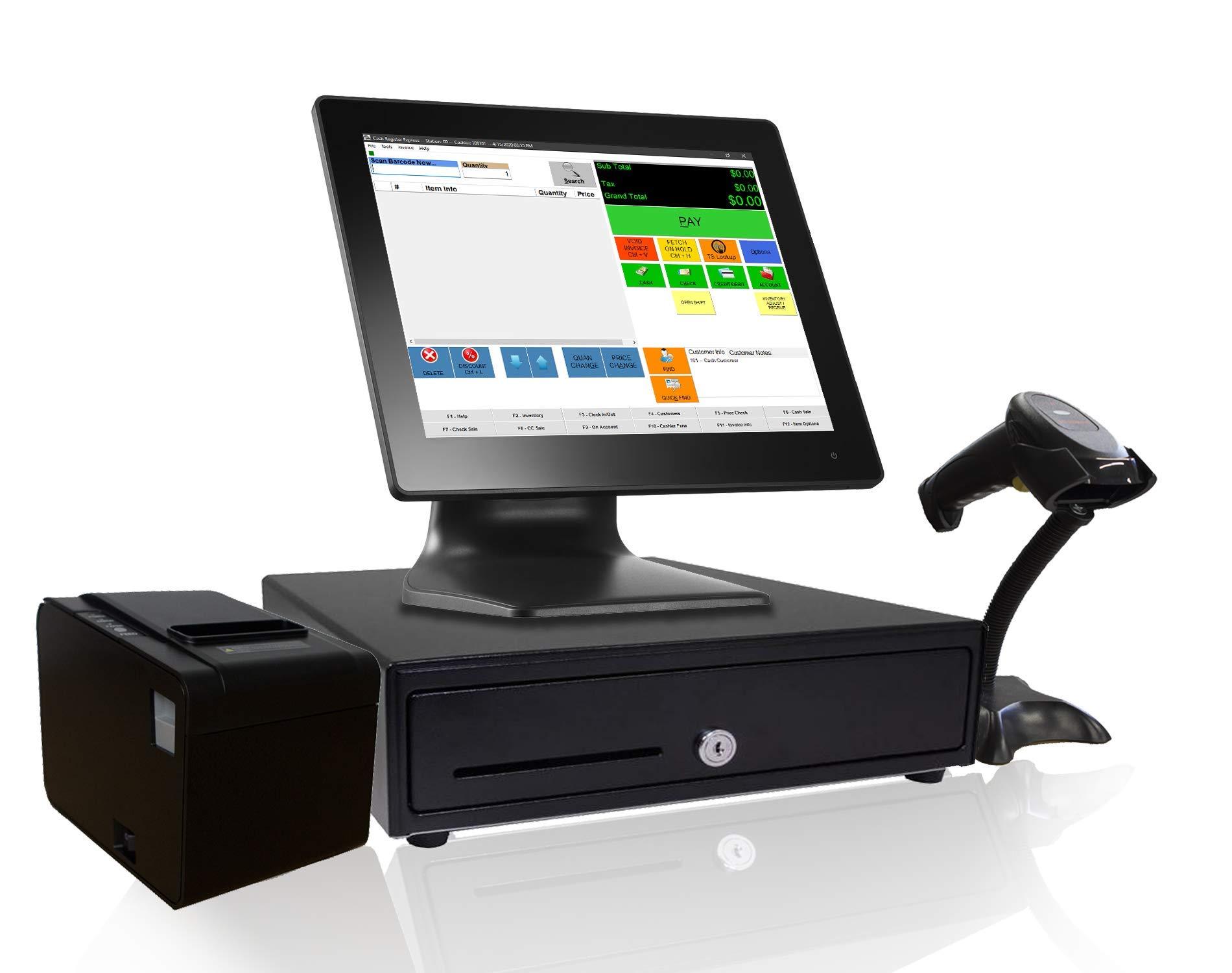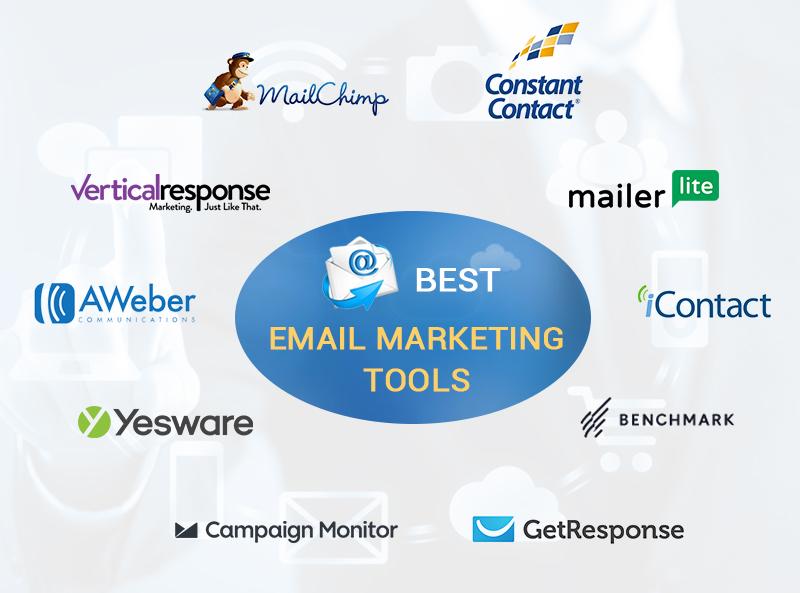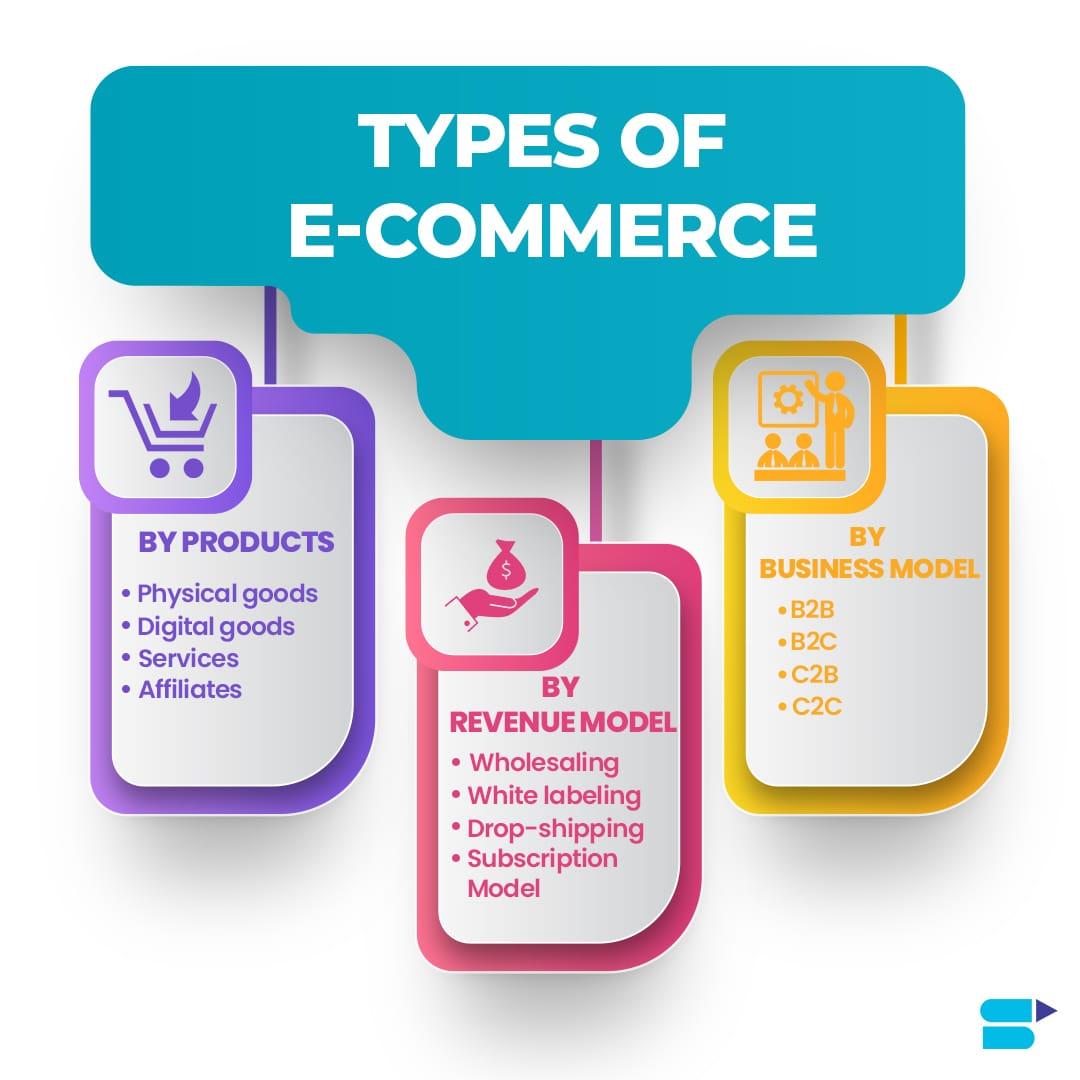
Starting an eCommerce business may sound like a dream reserved for those with deep pockets, but what if we told you that you can dive into the world of online selling without spending a dime? Yes, you read that right! In today’s digital age, opportunities are blooming everywhere, and with the right strategies, you can launch your own eCommerce venture even on a shoestring budget. Whether you’re looking to turn a passion into profit or simply explore a new income stream, there are practical and accessible ways to get started without breaking the bank. In this article, we’ll walk you through three easy methods that will empower you to kickstart your eCommerce journey. So grab a cup of coffee, and let’s explore how you can make your entrepreneurial dreams a reality—without spending a penny!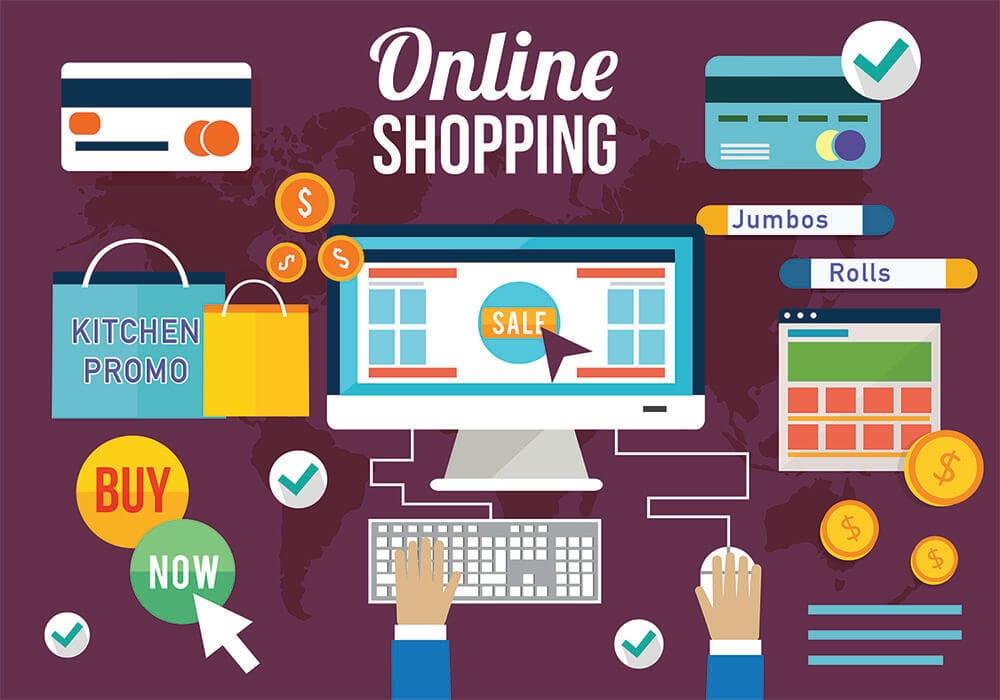
Understanding the Ecommerce Landscape for Beginners
The world of ecommerce is constantly evolving, and for beginners, it can seem overwhelming at first. However, understanding the underlying principles can simplify the process and set the stage for success. The beauty of ecommerce lies in its accessibility; anyone with a computer and an internet connection can dive in. Let’s explore some essential aspects that can help you navigate this landscape.
First off, it’s crucial to identify your target audience. Knowing who your potential customers are will dictate everything from the products you sell to your marketing strategy. Consider the following factors:
- Demographics: Age, gender, location, and income level.
- Interests: Hobbies, lifestyles, and preferences that align with your products.
- Pain Points: Common problems your audience faces that your products can solve.
Next, let’s talk about product selection. Start by choosing items that resonate with your audience and are easy to source. Remember, you don’t need to carry inventory right away. Consider options like:
- Dropshipping: Partner with suppliers to fulfill orders as they come in.
- Print on Demand: Design custom products that are printed and shipped only when sold.
- Affiliate Marketing: Promote products from others and earn a commission on sales.
Once you’ve settled on your products, building an online presence is the next step. Thankfully, various platforms can help you establish your brand without a hefty investment. Here are some popular options:
| Platform | Features | Cost |
|---|---|---|
| Shopify | User-friendly, customizable storefronts | Free trial available |
| WooCommerce | Flexible integration with WordPress | Free plugin, hosting fees apply |
| Etsy | Marketplace for handmade and vintage items | Listing fees apply |
Another critical element is marketing. Even if you don’t have a budget, you can still create a buzz around your ecommerce store. Leverage social media platforms to engage with your audience. Consider:
- Content Marketing: Share valuable content that attracts and informs your audience.
- Influencer Partnerships: Collaborate with influencers in your niche for wider reach.
- Email Marketing: Build a mailing list and keep your customers updated with newsletters.
Lastly, don’t underestimate the power of customer feedback. Engaging with your customers can help refine your offerings and improve your service. Encourage reviews, and use the feedback to grow your business. A responsive customer service strategy can not only enhance customer satisfaction but also foster loyalty.

Identifying Your Niche Without Spending a Dime
Finding your niche is a crucial step in launching a successful eCommerce business, and the good news is that you can do it without spending a dime. Start by tapping into your personal interests and experiences. What are you passionate about? What skills do you possess that could be turned into a product or service? Reflecting on these questions can help you identify a market that resonates with your strengths.
Next, it’s essential to conduct some basic market research. Use free tools like Google Trends or social media platforms to explore what people are discussing and what products are trending. Look for gaps in the market where customer needs aren’t being met. This could be an opportunity for you to step in and offer a unique solution. Engage with potential customers by asking questions, participating in forums, or joining relevant groups. Their feedback can be invaluable in shaping your niche.
Don’t underestimate the power of competitor analysis. Take some time to investigate existing businesses in your area of interest. Identify what they’re doing well and where they might be falling short. Create a simple comparison table to visualize this information:
| Competitor | Strengths | Weaknesses |
|---|---|---|
| Competitor A | Strong brand presence | Limited product range |
| Competitor B | Affordable pricing | Poor customer service |
| Competitor C | Unique product features | High shipping costs |
Once you’ve gathered this information, think about how you can differentiate yourself. Perhaps you can offer better customer service, a wider selection of products, or a unique selling proposition that sets you apart from the competition.
Another effective way to pinpoint your niche is to brainstorm potential product ideas based on trends and interests. Make a list of different categories that excite you, then break each down into sub-categories. For example:
- Health & Wellness
- Supplements
- Fitness Equipment
- Healthy Snacks
- Home & Garden
- Eco-Friendly Products
- Gardening Tools
- Interior Decor
- Fashion & Accessories
- Sustainable Clothing
- Customized Jewelry
- Tech Accessories
By narrowing down your focus, you’ll be more equipped to identify specific audiences and tailor your offerings to meet their needs. Lastly, consider leveraging your network. Reach out to friends, family, or online connections to gauge interest in your ideas. Sometimes, the best insights come from those who know you best.
Leveraging Dropshipping to Eliminate Inventory Costs
Dropshipping has emerged as a game-changer for aspiring entrepreneurs looking to break into the ecommerce space without the burden of upfront inventory costs. By adopting this model, you can focus your resources on marketing and customer service rather than worrying about storage and stock management. Here’s how you can leverage dropshipping effectively:
- No Inventory Hassles: With dropshipping, you don’t have to purchase products in advance or manage inventory. Once a customer places an order, you simply forward it to the supplier, who handles the fulfillment. This reduces the financial risk significantly.
- Wider Product Range: Since you’re not limited by inventory, you can offer a virtually limitless selection of products. This flexibility allows you to test different niches and adapt your offerings based on market demands without significant investment.
- Scalability: As your business grows, scaling up becomes effortless. You can expand your product range or target new markets without the need for additional storage space or logistics planning.
- Focus on Marketing: Free from the burden of managing inventory, you can channel your energy into marketing strategies that drive sales, such as social media campaigns, SEO, and email marketing.
However, to make the most of dropshipping, it’s essential to choose the right suppliers. Here’s a quick comparison of factors to consider when selecting a dropshipping partner:
| Factor | Importance | Example |
|---|---|---|
| Product Quality | High | Check reviews and ratings |
| Shipping Times | High | Fast and reliable delivery |
| Return Policy | Medium | Clear and fair terms |
| Communication | High | Responsive customer support |
| Product Range | Medium | Diverse selection of goods |
In addition to selecting the right suppliers, maintaining a strong relationship with them is crucial. Regular communication can help you stay updated on product availability, pricing changes, and any potential issues that might arise. Building a trustworthy relationship can lead to better deals and enhanced cooperation in the long run.
always keep an eye on your analytics. Track which products perform best and identify trends in your sales data. This information will guide your marketing strategies and product offerings, ensuring you cater to your audience effectively without the risk of excess inventory.
By embracing dropshipping, you are not just eliminating inventory costs; you are also opening doors to innovation, flexibility, and a broader market reach. This model allows you to run a low-risk ecommerce business that can adapt to changing consumer preferences and market dynamics while keeping your financial commitments minimal.

Utilizing Free Online Platforms to Launch Your Store
Launching your store without a budget may sound daunting, but the internet is brimming with free resources that can help you get started. Free online platforms offer a range of tools and services to create a professional online presence without the financial burden. Here are some of the best options you can explore:
- Website Builders: Platforms like Wix and Weebly allow you to create a stunning website with minimal effort. Their drag-and-drop interfaces make it easy even for those without technical skills. You can choose from various templates tailored for ecommerce.
- Social Media Shops: Use platforms like Facebook and Instagram to set up a shop directly on your profile. These platforms allow you to showcase products and engage with customers effectively, all for free!
- Marketplaces: Consider listing your products on sites like Etsy or eBay. These marketplaces provide instant access to a broad audience and handle the payment processing for you, streamlining the selling process.
Once you’ve chosen a platform, the next step is to set up your store. Start by crafting a compelling brand story. Your story is your unique selling proposition that sets you apart from competitors. Utilize high-quality images and engaging descriptions to captivate your audience. Remember, visuals can significantly impact buying decisions.
Next, focus on SEO (Search Engine Optimization) to enhance your store’s visibility. Use relevant keywords in your product descriptions, titles, and meta tags. Free tools like Google Trends can help you identify trending keywords related to your niche, giving you an edge in search rankings.
Don’t overlook the power of email marketing. Platforms like Mailchimp offer free tiers that allow you to build your email list and send marketing campaigns. A well-crafted email can bring customers back to your store, especially if you’re offering special promotions or new products.
| Platform | Key Features | Ideal For |
|---|---|---|
| Wix | Drag-and-drop builder, ecommerce templates | Beginners |
| Facebook Shop | Integrated with Facebook, easy customer engagement | Social sellers |
| Etsy | Marketplace for handmade goods, large audience | Crafters and artisans |
leverage the community. Join forums and groups related to your niche on platforms like Reddit or Facebook Groups. Engaging with like-minded individuals not only provides support but also opens up potential collaboration opportunities to enhance your brand’s reach.
Utilizing these free online platforms and strategies, you can build your ecommerce business from the ground up without spending a dime. The key is to stay committed, continuously learn, and adapt to the market’s needs. Your dream store is just a few clicks away!

Building a Brand on a Budget with Social Media
Creating a brand from scratch without a hefty budget might feel daunting, but social media offers a powerful platform to showcase your business and connect with your audience. Here are some actionable strategies to tap into the vast potential of social media without breaking the bank.
Define Your Brand Voice
Your brand voice is how you communicate with your audience. It should reflect your values, mission, and personality. Spend some time formulating your brand’s identity. Ask yourself:
- What emotions do I want to evoke in my audience?
- How do I want my customers to perceive my brand?
- What tone will resonate most with my target demographic?
Consistency is key. Use the same voice across all your social media platforms to help your audience recognize your brand easily.
Leverage User-Generated Content
Encouraging your customers to share their experiences with your products can be an effective way to build credibility without spending a dime. Consider creating a dedicated hashtag or a social media challenge that invites users to share their photos or reviews. This not only enhances engagement but also provides you with authentic content to showcase on your channels. Here’s how to encourage user-generated content:
- Run contests or giveaways that require sharing or tagging your brand.
- Highlight customer stories on your profiles to create community.
- Engage with customers by commenting and sharing their posts.
Utilize Free Tools and Resources
There are countless free tools available that can help streamline your social media presence. Use design platforms like Canva for visually appealing graphics or tools like Buffer to schedule your posts. Here’s a quick overview of some essential tools:
| Tool | Purpose |
|---|---|
| Canva | Graphic Design |
| Buffer | Social Media Scheduling |
| Hootsuite | Social Media Management |
| Google Analytics | Track Engagement |
By utilizing these free resources, you can maintain a professional appearance and monitor your growth without any financial investment.
Engage Authentically with Your Audience
Social media is all about connection. Make it a point to interact with your followers regularly. Respond to comments, ask questions, and create polls to generate conversation. Here are some ways to boost engagement:
- Host live Q&A sessions to connect directly with your audience.
- Share behind-the-scenes content to humanize your brand.
- Encourage feedback and act on it to show that you value your community’s input.
Collaborate with Micro-Influencers
While you might not have the budget to partner with major influencers, micro-influencers often charge less or are open to product exchanges. These individuals have dedicated, niche audiences and can provide authentic exposure for your brand. Reach out to potential collaborators who align with your brand values and propose mutually beneficial arrangements.
Creating Compelling Content that Captures Attention
In the bustling world of eCommerce, standing out is essential. With countless options available at the click of a button, capturing your audience’s attention is more crucial than ever. Here are some powerful strategies to create content that not only engages but also converts.
Know Your Audience
Your success hinges on understanding who you are talking to. Research your target demographic to tailor your content specifically to their interests and needs. Consider:
- What problems do they face?
- What solutions can you provide?
- What type of content resonates with them?
Tell a Story
People love stories. Weave a narrative into your content that relates to your product or service. This could be a customer success story, a personal journey, or even a behind-the-scenes look at how your business came to life. A well-told story can invoke emotion and foster a connection with your audience.
Use Eye-Catching Visuals
Visual content is a game-changer in maintaining attention. Integrate high-quality images, infographics, and videos that complement your written content. Here’s a simple breakdown of the types of visuals you can use:
| Type of Visual | Purpose |
|---|---|
| Images | To grab attention and illustrate concepts |
| Infographics | To present complex data in an easily digestible format |
| Videos | To engage users and provide in-depth explanations |
Incorporate Strong CTAs
A call to action (CTA) is pivotal in guiding your audience on the next steps. Use compelling language that evokes urgency or excitement. Phrases like “Join us now”, “Don’t miss out”, or “Transform your life today” can encourage users to take action immediately.
Optimize for SEO
Creating fantastic content is pointless if it doesn’t reach anyone. Utilize SEO practices by integrating relevant keywords naturally into your content. This will help improve your visibility on search engines, attracting organic traffic that’s genuinely interested in what you offer.
Encourage Engagement
Invite your audience to interact with your content. Ask questions at the end of your posts, create polls, or prompt discussions in the comments. Engagement not only helps with community building but also signals to search engines that your content is valuable.
By implementing these strategies, you can produce content that doesn’t just capture attention but also retains it, leading to higher engagement rates and conversions. Remember, the key is to be authentic and provide real value to your audience.

Networking and Collaborating with Other Entrepreneurs
One of the most effective ways to kickstart your ecommerce venture is through building relationships with other entrepreneurs. Networking can open doors to new opportunities, provide valuable insights, and even lead to partnerships that can propel your business forward.
Start by attending local events or online meetups where like-minded individuals gather. These can be workshops, seminars, or community events. Engage in conversations, exchange ideas, and share experiences. You might discover someone who has already navigated the challenges you’re currently facing.
Leverage social media platforms to connect with other entrepreneurs. Join groups on Facebook or LinkedIn where ecommerce discussions thrive. Participate actively by asking questions, sharing your knowledge, and offering help. Not only will you gain visibility, but you’ll also build a reputation as a knowledgeable resource within the community.
Consider collaborating on projects. Partnering with someone who has complementary skills can be a game-changer. For instance, if you excel at product sourcing but struggle with marketing, find someone strong in that area to team up with. This way, you can share the workload while benefiting from each other’s strengths.
Another option is to create or join a mastermind group. This is a small collection of entrepreneurs who meet regularly to discuss their businesses. The feedback, support, and accountability you’ll receive can be invaluable. Members often share resources, contacts, and tips that can save you time and money.
| Networking Strategy | Benefits |
|---|---|
| Attending Events | Face-to-face connections, immediate feedback |
| Using Social Media | Broader reach, diverse perspectives |
| Collaborating on Projects | Shared resources, combined skills |
| Joining Mastermind Groups | Support system, accountability |
don’t underestimate the power of follow-up. After meeting someone new, send a quick email or message expressing your appreciation for the conversation. This small gesture keeps the lines of communication open and can lead to more significant opportunities down the line.
Networking and collaborating may seem daunting at first, but the connections you forge can be pivotal in your ecommerce journey. Embrace the community around you, and you’ll find that you’re rarely alone in your challenges and successes. Remember, every entrepreneur you meet has a unique story to tell, and you might just find the key to unlocking your own success within their experiences.
Harnessing the Power of Email Marketing for Free
Email marketing is one of the most effective ways to connect with your audience, and the best part? You can start it without spending a dime. With a bit of creativity and strategy, you can build an email list that becomes a cornerstone of your eCommerce business.
First things first, you need to capture your audience’s attention. Consider offering a freebie—like an eBook, discount, or exclusive content—in exchange for email sign-ups. This not only incentivizes users to subscribe but also helps you gather valuable leads. It’s a win-win!
Once you’ve started building your email list, it’s essential to engage your subscribers. Send out regular newsletters, but make sure they are packed with value. Content can include:
- Product updates
- Special promotions
- Helpful tips related to your niche
- Behind-the-scenes insights into your business
To streamline your email marketing efforts, leverage free platforms like Mailchimp or MailerLite. These services offer user-friendly interfaces and free plans up to a certain number of subscribers, allowing you to start without upfront costs. Plus, they come equipped with automation tools that can help you send targeted emails based on user behavior, which can dramatically increase engagement.
Another powerful tactic is to segment your email list. Not all subscribers are the same, and personalizing your approach can lead to better results. You can segment your subscribers based on:
- Purchase history
- Geographic location
- User engagement levels
By tailoring your messages, you can increase open rates and conversions.
Lastly, don’t underestimate the power of testing. Experiment with different subject lines, email formats, and call-to-action buttons. Track your open rates and click-through rates to see what resonates with your audience. This data will help you refine your strategy over time.
Remember, the key to successful email marketing is consistency. Stay in touch with your subscribers regularly but be mindful not to overcrowd their inboxes. Finding the right balance will keep your audience engaged and eager to see what you have to offer next.

Using SEO Strategies to Drive Organic Traffic
Driving organic traffic to your eCommerce website is essential, especially when you’re starting with limited resources. Implementing effective SEO strategies can help you attract visitors without spending a dime on advertising. Here are some tried-and-true methods to boost your site’s visibility:
- Keyword Research: Identify the specific terms and phrases your target audience uses when searching for products similar to yours. Tools like Google Keyword Planner and Ubersuggest can provide valuable insights.
- Optimize Product Descriptions: Don’t just list your products; create engaging and informative descriptions that incorporate relevant keywords. This not only helps in ranking higher on search engines but also encourages potential customers to make a purchase.
- Create High-Quality Content: Start a blog related to your niche. Share tutorials, tips, and insights that resonate with your audience. Well-written articles can drive traffic and establish your brand as an industry authority.
- Leverage Social Media: Use platforms like Instagram, Pinterest, and Facebook to promote your products and blog posts. Engaging content shared across social networks can lead to increased website visits and organic traffic.
Another important aspect to consider is optimizing your website’s technical SEO. Ensure that your site loads quickly and is mobile-friendly, as these factors can significantly affect your search engine rankings. Regularly audit your website for broken links and improve the user experience to keep visitors engaged.
Building backlinks is also crucial for improving your site’s authority and ranking. Reach out to bloggers and other sites in your niche to request guest posting opportunities or collaborations. Quality backlinks can enhance your credibility and drive more traffic to your site.
| SEO Strategy | Benefits |
|---|---|
| Keyword Research | Increases visibility on search engines |
| Content Creation | Establishes brand authority and engages users |
| Social Media Promotion | Drives traffic and builds community |
| Backlinking | Improves site authority and ranking |
Lastly, consistently monitor your website’s performance using tools like Google Analytics. Track your traffic sources, user behavior, and conversion rates to identify what’s working and what needs adjustment. SEO is an ongoing process, and staying informed will help you refine your strategies over time.

Maximizing Free Tools for Effective Market Research
When embarking on your ecommerce journey, understanding your market is crucial. Fortunately, there are a plethora of free tools that can transform the way you conduct market research, allowing you to grasp customer needs and industry trends without breaking the bank.
First up, consider leveraging Google Trends. This tool is fantastic for gauging the popularity of search queries over time. By entering keywords related to your niche, you can discover seasonal trends and rising topics that could inform your product selection. It’s especially useful for identifying opportunities in competitive markets where consumer interests are shifting.
Next, dive into social media platforms. Facebook, Twitter, and Instagram are not just for marketing; they are goldmines for market insights. Join relevant groups or forums where your target audience hangs out. Pay attention to their discussions, questions, and complaints. This will not only help you fine-tune your product offerings but also give you a glimpse into what your potential customers truly value.
Another powerful free resource is SurveyMonkey or Google Forms. Create simple surveys to gather feedback directly from potential customers. This can be as straightforward as asking what features they look for in a product or their thoughts on pricing. Make it engaging with a few fun questions to encourage participation. The insights you gather will equip you with the information you need to make informed decisions.
Additionally, consider using BuzzSumo to analyze what content is performing well in your industry. By inputting relevant keywords, you can see which articles, blogs, or social media posts are garnering the most engagement. This helps you understand what resonates with your audience, allowing you to tailor your marketing strategy and product development accordingly.
don’t overlook the power of competitor analysis using tools like SimilarWeb or SEMrush which offer free versions. These platforms provide insights into your competitors’ web traffic, audience demographics, and engagement metrics. By understanding what works for them, you can identify gaps in the market and capitalize on them with your unique offerings.
Using these free resources not only saves you money but also arms you with the knowledge to make strategic decisions. Combine insights from these tools to create a comprehensive understanding of your market landscape and set yourself up for success in your ecommerce venture.

Turning Your Passion into Profit with Minimal Investment
Transforming a passion into a thriving business doesn’t always require deep pockets. With a little creativity and resourcefulness, you can kickstart your ecommerce journey without hefty investments. Here are some strategies to help you turn your hobbies into a profitable venture.
Leverage Dropshipping: One of the most cost-effective ways to start an ecommerce business is through dropshipping. This model allows you to sell products without holding any inventory. You simply partner with suppliers who ship products directly to your customers. Here’s why dropshipping is an attractive option:
- Low Startup Costs: No need to purchase inventory upfront.
- Wide Selection: Access to a vast range of products to sell.
- Flexibility: Operate from anywhere, as long as you have internet access.
Create and Sell Digital Products: If you have expertise in a particular area, consider creating digital products like e-books, online courses, or printables. This method requires minimal investment but can generate significant returns. The advantages include:
- High Profit Margins: Once created, digital products can be sold repeatedly without additional costs.
- Global Reach: Sell to anyone, anywhere, eliminating shipping costs.
- Scalability: Easily expand your product offerings without increasing overhead.
Utilize Affiliate Marketing: If you already have an online presence—be it a blog, YouTube channel, or social media account—you can monetize it through affiliate marketing. This involves promoting other people’s products and earning a commission for each sale made through your referral. Here’s how to get started:
- Identify Your Niche: Focus on products that resonate with your audience.
- Research Affiliate Programs: Join reputable programs that align with your brand.
- Create Engaging Content: Write reviews, tutorials, or guides that naturally incorporate affiliate links.
| Method | Investment | Potential Earnings |
|---|---|---|
| Dropshipping | Low (website setup) | Varies (up to 30% per sale) |
| Digital Products | Minimal (creation costs) | High (100% margin after cost) |
| Affiliate Marketing | None | Variable (up to 50% commission) |
By choosing one or more of these strategies, you can embark on your ecommerce journey without burdening yourself with financial stress. Remember, the key is to stay focused on your passion, continuously learn, and adapt to market trends. The sky is the limit when you combine determination with the right approach!

Learning from Successful Ecommerce Entrepreneurs
When diving into the world of ecommerce, it’s essential to draw inspiration and lessons from those who have already blazed the trail. Many successful entrepreneurs started from humble beginnings, often with little to no financial backing. Their experiences can offer valuable insights and strategies for anyone looking to launch a business on a shoestring budget.
Embrace the Power of Networking: Many ecommerce moguls emphasize the importance of building relationships. Engaging with other entrepreneurs, industry experts, and potential customers can open doors to opportunities you never imagined. Attend local meetups, join online forums, or connect on social media platforms. These connections can lead to collaborations, mentorships, and even funding opportunities.
Leverage Free Tools: The digital landscape offers a plethora of free tools that can help you kickstart your ecommerce journey without breaking the bank. Successful entrepreneurs often highlight tools like:
- Canva: For creating stunning visuals for your online store and marketing materials.
- Mailchimp: For building and managing your email marketing campaigns effectively.
- Shopify’s Free Trial: Test out your store idea without any initial investment.
Start Small and Scale: Many thriving entrepreneurs began with a limited product range or niche market. This approach allows you to focus your efforts, reduce overhead costs, and understand your audience better. As you gain traction, you can gradually expand your offerings. Consider the following strategies:
| Strategy | Benefits |
|---|---|
| Focus on a Niche | Less competition, easier to target specific customers. |
| Drop Shipping | No inventory costs, ability to test products quickly. |
| Pre-Sell Products | Validate market demand before production. |
Utilize Social Media Marketing: Many entrepreneurs found success by harnessing the power of social media. Platforms like Instagram, Facebook, and TikTok can be used to market products organically, building a loyal following without spending a dime. Consider creating engaging content that resonates with your target audience, such as:
- Behind-the-Scenes Videos: Showcasing your product creation process.
- User-Generated Content: Encouraging customers to share their experiences.
- Live Streams: Interacting with potential buyers in real-time.
always be ready to learn and adapt. The ecommerce landscape is ever-changing, and the ability to pivot based on market trends and customer feedback is crucial. Many successful entrepreneurs attribute their longevity and growth to their willingness to embrace change and continuously improve their offerings. By following these insights and leveraging available resources, you can launch your ecommerce venture with confidence, even on a tight budget.

Staying Motivated and Overcoming Challenges in Your Journey
Embarking on the journey of starting an ecommerce business without any financial backing can feel daunting, but it’s essential to keep your motivation high and tackle any challenges head-on. Many successful entrepreneurs began with little to no money, relying on creativity, perseverance, and resourcefulness to build their brand. Here are some strategies to maintain that drive and overcome obstacles along the way.
First and foremost, set clear, achievable goals. Break your larger vision into smaller, manageable tasks. Celebrate each little victory; it will keep your spirits up and remind you that progress is being made. Consider creating a visual representation of your goals—like a vision board or a digital checklist—that you can refer to regularly. This tangible reminder of your objectives can ignite your motivation on tough days.
Another effective way to stay motivated is to surround yourself with a supportive community. Join online forums, social media groups, or local meetups focused on ecommerce or entrepreneurship. Engaging with like-minded individuals can provide inspiration and valuable insights, and you’ll find comfort in knowing that others are facing similar challenges. Sharing your experiences and learning from others will foster resilience and encourage you to keep pushing forward.
Additionally, don’t underestimate the power of self-education. Utilize free or low-cost resources available online, such as blogs, podcasts, and webinars. As you gain knowledge and skills, you’ll feel more empowered to tackle challenges and confront uncertainties. Creating a daily or weekly routine that incorporates learning will help you stay committed to your growth, both personally and professionally.
When faced with obstacles, it’s crucial to reframe your mindset. View challenges as opportunities for growth rather than setbacks. This shift in perspective can transform your approach to problem-solving. For instance, if you’re struggling to find a reliable supplier, consider it a chance to explore alternative products or even create something unique that sets you apart from competitors. Embracing challenges can lead to innovation and new paths for your ecommerce venture.
Remember, resilience is built through experience. Each challenge you overcome strengthens your ability to face future hurdles. Keep a journal of your journey, noting both successes and setbacks. Reflecting on how you navigated past difficulties can be a powerful motivator when you encounter new ones. It serves as a record of your growth and a reminder that you’ve overcome challenges before.
Lastly, always prioritize self-care. The journey of starting a business can be overwhelming, so ensure you’re taking care of your physical and mental well-being. Regular exercise, healthy eating, and mindfulness practices like meditation can significantly boost your motivation levels. When you feel good physically, it reflects in your mindset and enhances your ability to tackle challenges effectively.
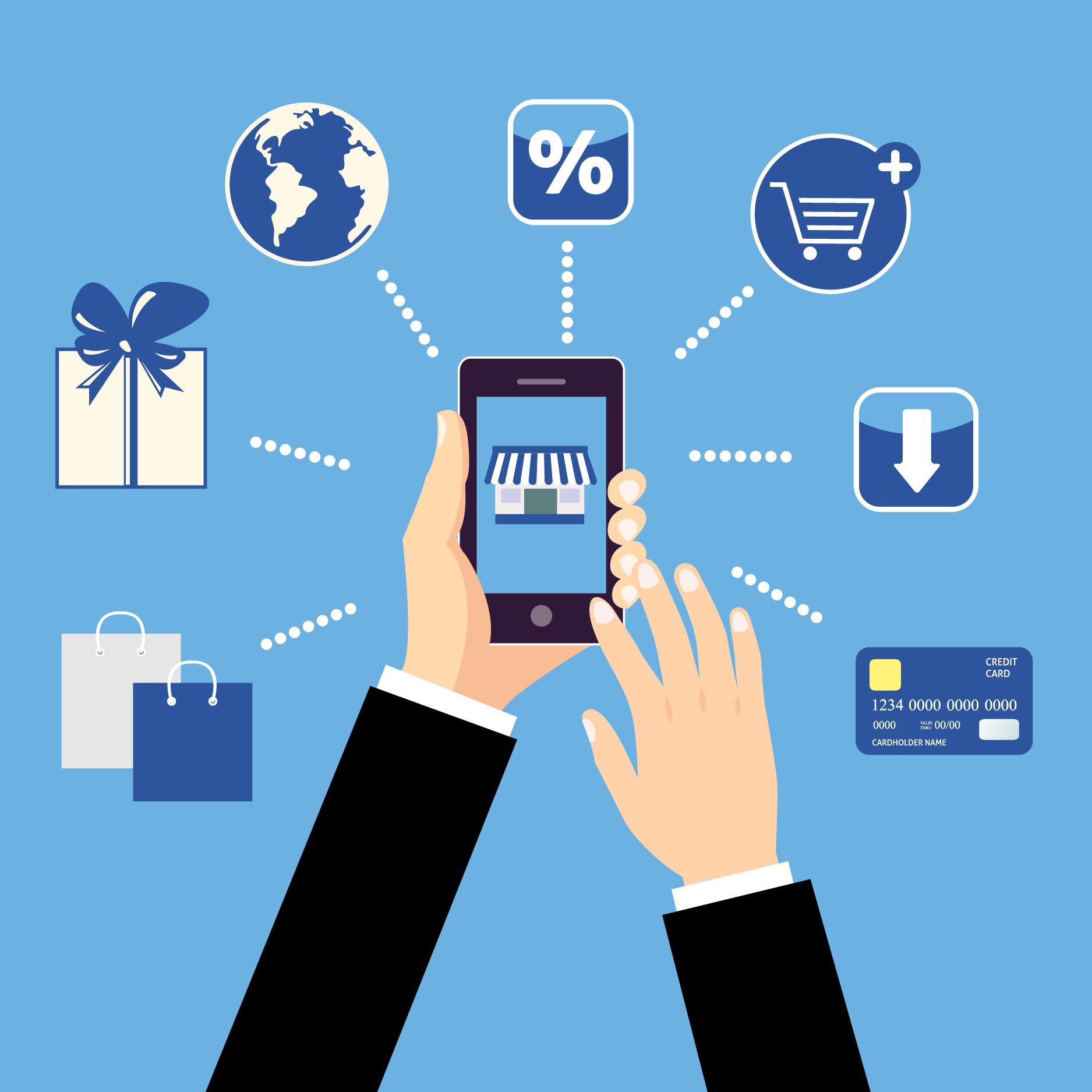
Taking the Next Steps Toward Your Ecommerce Dream
Embarking on your journey in ecommerce can feel overwhelming, especially when finances are tight. However, there are creative ways to kickstart your business without breaking the bank. Let’s explore some innovative strategies that will put you on the path to success.
Leverage Dropshipping: One of the most popular methods to start an ecommerce business without upfront inventory costs is through dropshipping. This model allows you to sell products directly from suppliers to customers without handling the products yourself. Here’s how you can make it work:
- Choose a niche that excites you and has market demand.
- Partner with reliable dropshipping suppliers.
- Create an attractive online store using platforms like Shopify or WooCommerce.
- Market your products through social media and SEO to drive traffic to your site.
Utilize Free Digital Marketing Tools: Marketing doesn’t have to be costly. In fact, there are numerous free tools available that can help you promote your ecommerce site effectively:
- Social Media Platforms: Use Facebook, Instagram, and Pinterest to engage with potential customers.
- Content Creation: Start a blog or a YouTube channel focused on your niche, providing value and driving traffic to your store.
- Email Marketing: Build an email list using free services like Mailchimp to notify customers about promotions and new products.
Tap into Affiliate Marketing: Another cost-effective way to bolster your ecommerce business is through affiliate marketing. By collaborating with bloggers or influencers in your niche, you can reach a broader audience without spending on advertisements.
- Identify influencers aligned with your brand values and audience.
- Offer them a commission for every sale generated through their referral.
- Promote your affiliate program on your website and social media for wider reach.
Consider organizing your strategy in a simple table to visualize your approach:
| Strategy | Benefits | Implementation |
|---|---|---|
| Dropshipping | No inventory costs, flexibility | Set up online store, partner with suppliers |
| Free Marketing Tools | Low-cost customer engagement | Utilize social media, blogging |
| Affiliate Marketing | Wider reach, performance-based costs | Partner with influencers, promote program |
Starting your ecommerce venture without money is indeed possible. With determination, creativity, and the right strategies, you can turn your dream into reality. Remember, it’s all about leveraging the resources available to you and staying committed to your vision. The journey may be challenging, but the rewards can be incredibly fulfilling!
Frequently Asked Questions (FAQ)
Q&A: How to Start an Ecommerce Business Without Money (3 Easy Ways)
Q: Is it really possible to start an ecommerce business without any money?
A: Absolutely! While starting a traditional business often requires a hefty investment, the beauty of ecommerce is that there are plenty of ways to kick things off without breaking the bank. With creativity, resourcefulness, and the right strategies, you can launch your online store and start making sales even on a shoestring budget.
Q: What are the three easy ways to start an ecommerce business without money?
A: Great question! Here are three effective approaches:
- Dropshipping: This model allows you to sell products without holding any inventory. When a customer makes a purchase, you simply order the item from a third-party supplier who ships it directly to the customer. This way, you won’t have to invest in stock upfront!
- Print on Demand: Similar to dropshipping, print on demand lets you create custom products like t-shirts, mugs, or phone cases. You only create and pay for the item after it’s sold, which means no upfront costs for inventory. Plus, it’s a fantastic way to showcase your unique designs!
- Affiliate Marketing: If you don’t have products of your own, consider promoting other businesses’ products. You’ll earn a commission for every sale made through your referral link. It’s a win-win: you get to earn money without any upfront investment!
Q: What platform should I use to get started?
A: Look into platforms like Shopify, WooCommerce, or Etsy, which offer user-friendly interfaces and low-cost plans. If you choose dropshipping or print on demand, some platforms even integrate seamlessly with suppliers. Plus, there are often free trials, so you can start building your store without any initial costs!
Q: How do I market my ecommerce business without spending money?
A: There are plenty of free marketing strategies you can implement! Start by leveraging social media; platforms like Instagram, Facebook, and TikTok are great for showcasing your products. You can also create valuable content through blogging or joining online communities related to your niche. Don’t forget about email marketing—building an email list is a powerful way to reach potential customers without spending a dime!
Q: What are some common pitfalls to avoid when starting an ecommerce business with no money?
A: One pitfall is underestimating the importance of research. Make sure to thoroughly research your niche and target audience to avoid wasting time on ineffective strategies. Additionally, don’t neglect to invest time in learning about ecommerce best practices—there’s plenty of free information available! Lastly, stay patient; success won’t happen overnight, but with persistence, you’ll get there.
Q: How can I measure my success without spending money on tools?
A: You can track your success through free tools! Google Analytics is an excellent resource for monitoring website traffic and customer behavior. Most ecommerce platforms also provide built-in analytics to help you track sales and trends. By regularly reviewing these metrics, you can make informed decisions to grow your business.
Q: Any final tips for someone ready to take the leap into ecommerce?
A: Don’t let the idea of starting without money hold you back! Embrace your creativity and take advantage of free resources. Network with others in the ecommerce community and keep learning. Remember, every big business started somewhere—yours could be next! Take that first step, and you’ll be surprised at what you can achieve. Happy selling!
Future Outlook
this guide helpful, why not share it with someone who’s also dreaming of launching their own eCommerce venture? Let’s build a community of aspiring entrepreneurs who support and uplift each other. And as you embark on this exciting journey, keep in mind that every successful business started with just an idea and a bit of courage.
Now go ahead—take that first step today! Your eCommerce empire awaits!



